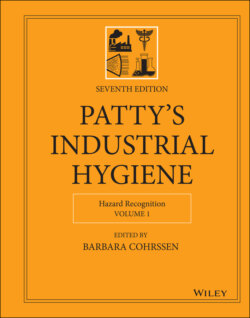Читать книгу Patty's Industrial Hygiene, Hazard Recognition - Группа авторов - Страница 21
2.6 1970s: OS&H Legislation and Its Impact on the Industrial Hygiene Profession in Several Countries
ОглавлениеIn the United States, passage of the OSHAct of 1970, which has the purpose of assuring “…so far as possible every man and woman in the nation safe and healthful working conditions …”, had a very broad bearing on the further development and practice of the industrial hygiene profession in the United States. The OSHAct and the regulations deriving from it have been substantial factors in the broad recognition and development of industrial hygiene as a science and a profession. The profession underwent tremendous growth in all of its concepts and technical aspects to meet its expanded responsibilities. Other industrialized countries had similar experiences in the professional recognition and growth of the science of industrial hygiene including the Roben's Report (UK) which led to the UK Health and Safety at Work Act 1974.
In 1970, the US Department of Labor's newly‐formed Occupational Safety and Health Administration (OSHA) (46) greatly increased the demand for industrial hygienists. In April and May of 1971, OSHA published lists of construction and general industry permissible exposure limits (PEL) that adopted and superseded those in the 1969 Walsh–Healey standard.
Standard methods of industrial hygiene practice continued to be established in the 1970s. For example, AIHA established its laboratory accreditation program in 1974 and the National Institute for Occupational Safety and Health published many analytical methods for use by industrial hygienists in 1974 (47), and the key elements of modern industrial hygiene exposure assessment were defined in 1977 by the National Institute for Occupational Safety and Health in a sampling strategies manual (48).
By the end of the 1970s, nonoccupational or public health hazards such as community exposures were generally considered to be aspects of industrial hygiene professional practice. While still a small profession, the 1970s saw the doubling of the number of CIHs from 647 at the end of the 1960s to 1750 by the end of the 1970s.
Elsewhere in the world, there were similar concerns regarding the professional qualifications and the need for certification of professional hygienists. In the United Kingdom, the Institute of Occupational Hygienists was formed in 1975, and professional qualification came under the control of the British Examining and Registration Board of Occupational Hygiene (BERBOH) (49).
